|
You might not be surprised that Trump’s policies have an anti-science flare. But the president’s budget hit home for me with the planned closure of the Stanford Synchrotron Radiation Laboratory (SSRL). Since January (see post below), I have been conducting experiments there. If the facility closes, I’ll lose access to a powerful tool to help me understand the how plants take up contaminants from soils. But there is much to be lost beyond my own research. I’m there along with a dizzying array of scientists, engineers, artist historians, and others who rely on the facility to gather molecular-scale information not possible with other means.
With this potential catastrophic closure looming on the horizon, synchrotron users have been dunked in the cold water tank of political realities. DOE staff organized briefings, visits were paid to local offices, harried congressional staffers took our calls. And yet I felt conflicted. I felt strange, selfish even, advocating to keep my research facility open while I could have been using that valuable, fleeting Congressional direct line connection to advocate for any number of issues with potentially more obvious and serious impacts: single payer healthcare, funding research on climate change, resisting the Muslim ban, and now, keeping DACA – a program benefitting many students possibly including my own interns. In a demonstrable way, though, advocating for this research facility is advocating for broad priorities beyond my personal research needs. Synchrotrons are diverse. A “user facility” means that people from all over the world come spend a few 24-hr days running experiments on a range of topics wide enough to appeal to conservatives, liberals, and leftists. Nuclear weapons stockpile management? Check. Nuclear waste disposal? Check. Understanding mechanisms behind rare disease? Check. Sustainable environmental remediation? Got it. Delving into the toxicity of lead contaminated soils? Coming right up. The public money we’re fighting for can’t be replaced by public-private partnerships, foundations, and corporate spending. These other sources don’t provide enough funding, don’t provide it consistently, and can produce biased results, as is known to happen in clinical drug studies. Fundamental science research is a public good, whereas chipping away at this funding represent the same privatizing of the commons we see regarding public lands, public schools, and reflected in the Wall Street ties seen the highest levels of federal government (Goldman Sachs, anyone?). While Congress ultimately controls purse-strings, presidential budgets signal priorities. In promoting the closure of SSRL, Trump signals an anti-science, anti-commons, and ultimately pro-capital, anti-democracy core. The March for Science might not be the only time scientists take to the streets.
0 Comments
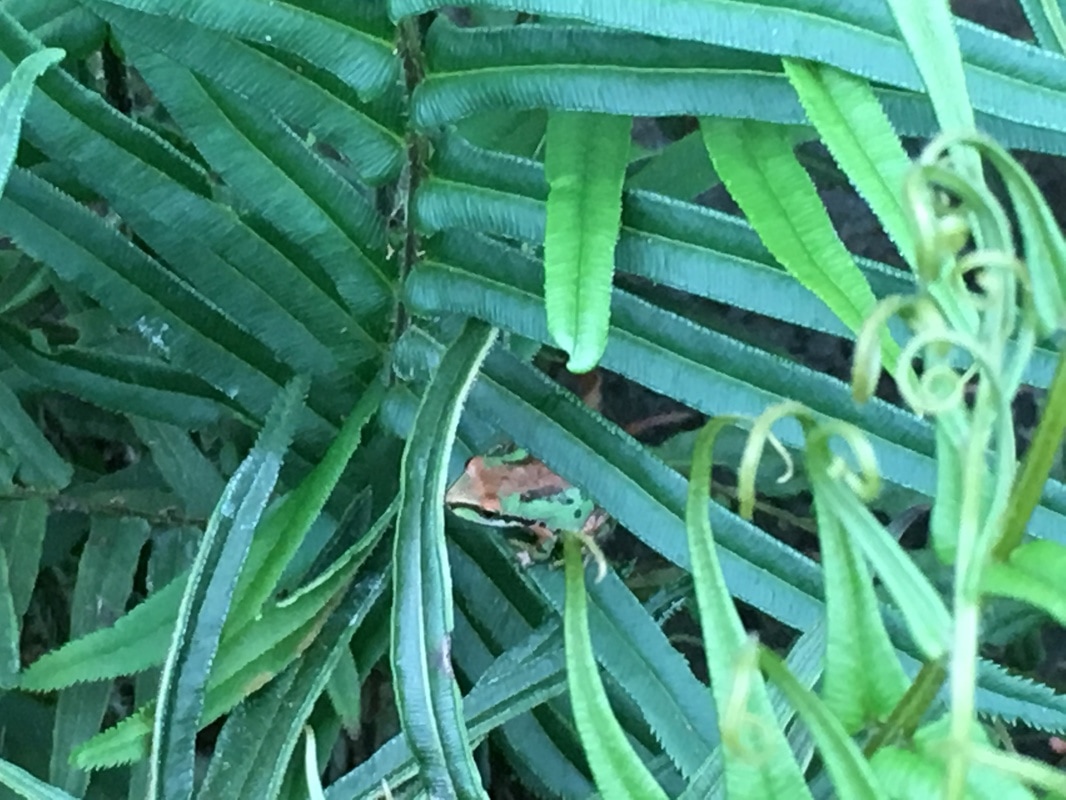 The ferns are not the only thing calling the hoop houses at my Richmond, CA field site home. In mid-May I started noticing small frogs, most likely Pacific Chorus Frogs (Pseudacris regilla) among the ferns, perching on pinnae or resting in frog-sized cavities of the greenhouse. I was fascinated, but also concerned. Animal interactions are a classic concern in phytoextraction research. The ferns that the frogs call home are full of arsenic. If the frogs were somehow ingesting the plant tissue, it could prove toxic to the frogs and transmit arsenic up the food chain to racoons and other frog predators. Frogs aren't known to eat plant tissue, however. Perhaps they are feeding on the mosquitos and mosquito hawks that also seem partial to the humid greenhouse oasis in the otherwise dry and windy San Francisco Bay shore summer air. Or perhaps the greenhouse offers shelter from birds of prey. 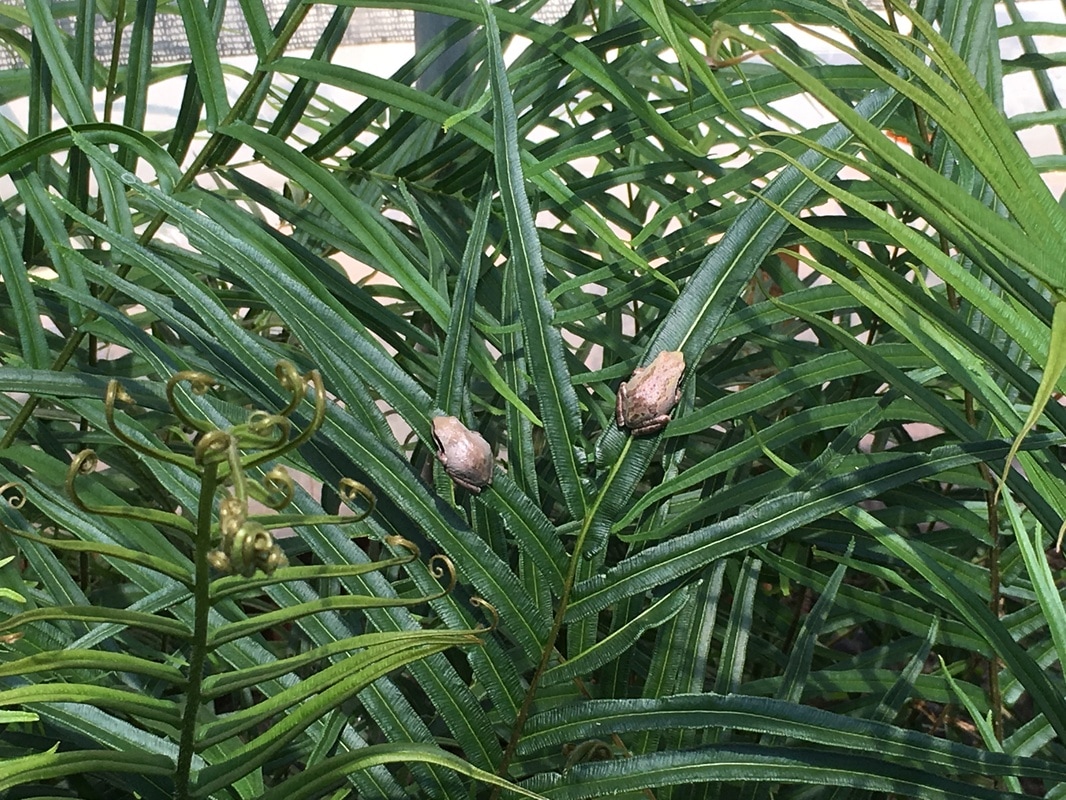 On June 14, about a month after I first observed the frogs, I noticed small frogs -- and lots of them! These young frogs are about a centimeter wide. The time from egg to tadpole to metamorphisis can be several months. The adults probably migrated to the greenhouse from their breeding grounds, possibly vernal pools in the restored coastal terrace prairie, with the young frogs following post-metamorphosis. Adult frogs have been observed up to 300 meters from their breeding pools, where they will return the following year. 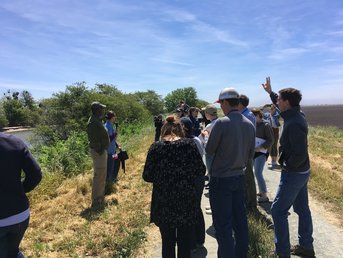 Gathering on a levee on the San Joaquin River (to the left), with fields on the Nature Conservancy's Staten Island Farm to the right. Gathering on a levee on the San Joaquin River (to the left), with fields on the Nature Conservancy's Staten Island Farm to the right. The bus wound along the two lane road past a levee on a recent windy Friday. Looking out to the right, over the levee we saw the San Joaquin River, carrying water coursing out of the Sierra Nevadas towards the San Francisco Bay. On the left, a good 10-15 feet below the level of the river, fields sat ready for spring planting. We were on a tour of agricultural extension work in San Joaquin County, sponsored by the University of California Global Food Initiative, where I am a Fellow. San Joaquin County, just outside the San Francisco Bay area, is part of California’s agricultural heartland. Rich organic soils on the west side in the Delta region transition to the California state soil, the San Joaquin sandy loam, on the eastern side closer the Sierras. Extension advisers and specialists in the University of California Agriculture and Natural Resources division help farmers in this highly productive region answer practical questions, like what cover crops to plant and when to mow them down, why some but not all of their grape vines are dying, and what cherry varieties to plant for good crop production in a warming climate. As we traveled through the Delta, I asked the specialist with us why the field soils were so much lower than the river. In other words, why were they subsiding? She noted the intensely productive nature of the delta soils, and replied that subsidence is a natural process that results from farming these rich soils. The farm advisor at our first tour stop, the Staten Island Natural Conservancy Farm, gave us a few more clues. He described how the Delta was a network of freshwater peat wetlands for several thousand years up until California’s Gold Rush in the 1850s. Before European contact, Yokut people hunted in the Delta and relied on the tule reeds for building materials. European settler colonialism decimated local indigenous peoples, with survivors relocated to Rancherias (the Spanish equivalent of reservations). Wetlands were drained to “reclaim land” during and after the Gold Rush, with levees constructed first out of peat (they didn’t last) and then out of sediments from gold mining that were clogging up the local rivers. The crux of the sinking land situation has to do with draining the wetlands. As the organic carbon in the peat is exposed to oxygen, soil microbes use it for fuel, voraciously transforming it to carbon dioxide. For a soil high in organic matter like peat, this means a large part of the soil is literally turning into air, with 50 pounds of carbon dioxide released daily from each acre of drained Delta wetlands, according to the USGS. The volume of soil shrinks, and, just like in the Netherlands, the level of the land surface drops. Reflooding the historic marshland reduces the loss of organic carbon to carbon dioxide, but eliminates agricultural land uses and can sometimes increase emissions of methane, another greenhouse gas even more potent than carbon dioxide. With the development of carbon markets, scientists are looking more closely into the benefits of reflooding Delta wetlands, and it’s possible farmers could get carbon credits for restoring their land to wetlands. However, waterfowl on the Pacific Flyway, like the cranes and geese at the Staten Island Farm, have become reliant on agricultural habitat and leftover grain to support overwintering populations. Like many problems in the agriculture+environment nexus, there is no easy answer to the question of how to protect subsiding Delta soils. 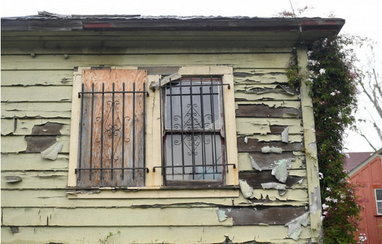 Paint chipping off a house in Emeryville, CA. Photo: Noah Berger/Reuters Paint chipping off a house in Emeryville, CA. Photo: Noah Berger/Reuters Many community gardeners and urban farmers are concerned with soil lead contamination, and rightly so. Lead is a neurotoxin and is linked to changes in children’s brain development and lowered IQs. The Flint, MI water crisis has put children’s blood lead levels in the news for months, adding fuel to a long-held assumption that lead problems are worst in older rust belt and industrial cities in the US Midwest and on the East Coast. However, recent analyses by Reuters show children living in older West Coast neighborhoods also have dangerously high blood lead levels. In city center neighborhoods from Los Angeles to Fresno to the Bay Area to north coast cities, child blood lead levels are elevated. Children in at least 29 California neighborhoods have higher blood lead levels than those in Flint, MI. This could be due to water contamination, like in Flint, but also direct exposure to lead paint, and contaminated soil. How can people know if they are at risk for lead exposure from lead contaminated soil? Old houses and proximity to high-traffic roads and industry are key factors. This issue cuts across class lines, yet higher risk areas are often low income communities where negligent landlords have not maintained rental properties carefully. Peeling paint, and paint that is carelessly sanded off, essentially goes directly into the soil around a house. Often, concentrations are highest directly adjacent to a house, and decrease as you move into a yard. Soil testing to identify lead contamination is important but expensive and can seem inaccessible. Because lead contamination is a public health risk with documented effects on community safety, public health agencies and urban agricultural extension services should be subsidizing soil testing, following the University of Delaware Extension, which tests soil samples for lead for only $10. However, in this age of neoliberal privatization of public services, public funding is sorely lacking. In do-it-yourself community empowerment approaches, groups like the Worcester Roots Project do amazing youth-based work testing and remediating contaminated soil for gardeners. However, this DIY approach lies at a point of tension with the neoliberal state: in empowering communities to take care of problems on their own, DIY groups are essentially filling the gap in services left by a retreating, increasingly corporatized civic model. DIY groups scramble for limited funding while government programs (like the EPA’s lead poisoning reduction efforts) get cut. Despite these tensions, current grassroots soil cleanup efforts stem from a long legacy of important, effective community environmental and food justice work, including the Black Panther’s Free Breakfast Program. For gardeners, the expense of soil testing is offset by the ease of other risk reduction practices, which include heavily amending soil with compost, keeping soil mulched, not tracking any soil into houses, and washing all produce. Roots and leafy greens should only be grown in soils with low lead (<200-400 ppm), while fruiting crops and legumes can be grown in soil with moderate lead. Kansas State Extension and Cornell have published excellent guides summing up best management practices for gardening in lead contaminated soils. Lead contamination is a serious problem, but so is contamination with other metals and organic contaminants, like polycyclic aromatic hydrocarbons, or PAH’s. We know less about the behavior and effects of these soil contaminants than we know about lead. Learning more about the behavior of these toxins is a great application of science in the public interest. In the meantime, most experts agree that the health benefits of growing and eating fresh vegetables, especially while following the best management practices touched on above, outweigh the dangers of potential exposure to soil contaminants. Follow best management practices to bring healthy food to your table, safely! Urban farms can help lower cities' greenhouse gas emissions - if the farms don't get developed3/6/2017 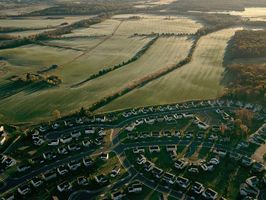 Suburban development in Northern Virginia. Photo: National Geographic Suburban development in Northern Virginia. Photo: National Geographic Urban land – and the activities occurring on it – accounts for 70 times more greenhouse gas emissions (GHG) than agricultural land, I learned last week at the California Climate and Agriculture Network conference in Davis, CA. In a study looking at GHG emissions from Yolo County, CA, a primarily agricultural county near Sacramento and home to UC Davis, researchers found that agricultural land accounted for only 14 percent of countywide GHG emissions. In contrast, the urban areas emitted 86 percent of the county’s emissions. Although Yolo County is home to many organic farms practicing sustainable agriculture, this figure for agricultural emissions also includes plenty of farms practicing conventional agriculture, and counted high GHG emitting practices like diesel fuel use (think carbon dioxide) emissions), application of synthetic nitrogen fertilizer (think nitrous oxide), rice cultivation and dairy production (think methane). In fact, farmers of all stripes are lowering emissions on their own due to market pressure to apply less nitrogen fertilizer. Emissions fell between 1990 and 2008, before recent emissions regulations went into effect. Not only did ag emissions fall on a per-acre basis, but total ag emissions also fell, because like many rural counties, Yolo county is urbanizing. Urban sprawl increases emissions more than other types of urban growth because people have to drive longer distances. This study suggests cities and counties that want to lower GHG emissions should focus on “smart growth” policies that promote urban in-fill development while preserving near-by agricultural land. However, this in-fill can come at a price – development pressures on urban greenspace including urban agricultural land. Urban greenspace, farms, and gardens play a double role in helping cities lower GHG emissions, because emissions management involves both lowering emissions, by changing the type of activity and amount of energy consumed on the land, coupled with mitigation strategies to sequester existing carbon, by storing carbon in woody biomass (trees, shrubs) and returning carbon to the soil. Since urban agriculture and greenspace can help do both, urban agriculture and greenspace land is an important part of urban climate change solutions and consequently is the wrong land to develop for infill housing. Here in Berkeley, we are seeing housing development pressure on two urban greenspace plots. In one proposal, the City of Berkeley is considering putting tiny houses for homeless people on the Santa Fe Right of Way, one of my soil remediation field sites. This area has arsenic contamination in the soil, will likely become a public greenway and youth training farm once the soil is cleaned up, and provides important greenspace in a low-income, historically Black part of the city with the least greenspace. In the second proposal, UC Berkeley is considering building student housing on the Oxford Tract, the university’s agricultural research tract that is adjacent to campus right in downtown Berkeley and home to the Student Organic Garden. The Student Organic Garden is one of the only entities providing fresh produce to the student food pantry. In both cases, vulnerable populations are being forced to choose between housing and fresh local food and greenspace. A more sustainable and climate-friendly plan would place much-needed housing on already developed Berkeley property that sits underutilized with vacant buildings, while preserving the GHG lowering, carbon sequestering, and local food producing potential of these two valuable greenspaces. 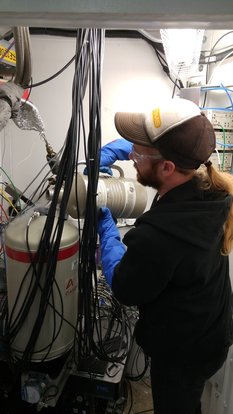 In the hutch at the beam line, adding liquid nitrogen to cool the fluorescence detector. In the hutch at the beam line, adding liquid nitrogen to cool the fluorescence detector. What is a soil scientist doing at a particle accelerator? For 4 days in mid-January I hunkered down in a cable-draped cubicle at the Stanford Synchrotron Radiation Lab (SSRL), bombarding my soil samples with X-rays. I’m not branching out into particle physics, but just wanted to learn information about how plant growth affects the chemical form of arsenic in my soils. Of course, I’m not working with just any plant, but with Pteris vittata, the brake fern with a special ability to hyperaccumulate arsenic. We are interested in how the fern accesses the arsenic in the soil, and whether this is different than what happens in the root zone of plants that don’t hyperaccumulate the toxic element. So, back to my original question: what am I doing at the particle accelerator? There are surely other ways to get information on plant-available arsenic, like various wet chemistry extractions. These can be really useful but run the risk of changing the chemical form during the procedure, and aren’t always very precise. Synchrotron radiation, on the other hand, can generate X-rays strong enough to allow us to look directly at our soils and “see” the molecular structure of the arsenic, with the soil sample still in a state similar to when it was in the ground at my field site surrounded by fern roots. Before going to the synchrotron for our beamtime, I had taken a really helpful short course on X-ray absorption spectroscopy, but still wasn’t really sure how the whole processed worked. Now, I’m still not totally sure, but I have a much better idea! Picture a ring the size of a small city block, with various buildings coming off at weird angles. In one of these buildings, an electron gun generates electrons, which speed up to almost the speed of light as they travel down a tube full of magnets (the linear accelerator!). Then, the electrons are injected into the ring, which is pretty large – it took me about 10 minutes to walk around it. As they spin around the ring, they have to be bent by magnets to stay in the ring. Every time they are bent, they lose energy as photons, little packets of light. These photons are the X-ray beam we shine on our samples. There are almost 30 total beamlines at SSRL, so many people can use the facility at one time to look at their samples. Some people are soil or environmental scientists looking at contaminants, like my group, some are materials scientists looking at nanoparticles and designing better batteries, some are biologists looking at proteins, and some are even art historians looking at how works of art were created. The beam is running 24 hrs a day, 7 days a week, so you can end up with a pretty interesting mix of people at the coffee machine in the wee hours of the morning! 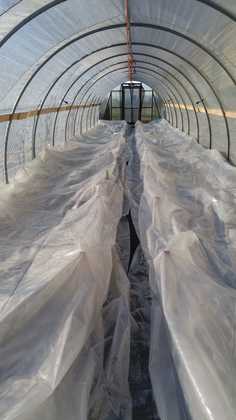 Can't see the ferns for the plastic! Ferns in the hoop house we built at our Richmond Field Station field site, Richmond, CA. Ferns are under 6 mil plastic and floating row cover, for freeze protection. Can't see the ferns for the plastic! Ferns in the hoop house we built at our Richmond Field Station field site, Richmond, CA. Ferns are under 6 mil plastic and floating row cover, for freeze protection. The weather in the San Francisco Bay Area has been cold for our humid subtropical hero, the brake fern, Pteris vittata. Here in our Mediterranean clime lows have been in the mid 30’s with freeze and frost warnings. Previous experience lets me know that frost and freezing temps do not mix well with P. vittata fern fronds. My first year, temperatures at our Berkeley field site dipped down to -3.3 degrees C (26 degrees F), and due to the cold coupled with flooding we lost 30% of our ferns over the winter. The ferns we recently planted out at our Richmond field site are particularly vulnerable to freeze damage: they have a flush of new growth, which is tender and not acclimated to the cold. We are flirting with danger as we encourage this growth. If there is enough growth over winter and spring, we can harvest fronds in May, before the June flush of growth we normally see. The more fronds of this arsenic hyperaccumulator that we harvest, the more arsenic we remove from the soil. The ferns in our field studies are planted in a hoop house, also known as a high tunnel, a common season extension structure that is basically an unheated, temporary greenhouse erected in a field. The hoop house protects from wind and can provide a few degrees of frost/freeze protection. Hoop houses are especially advantageous during advective freezes, which are freezing events brought about during windy weather by movement of cold air. But on calm nights, radiation freezes can occur, where the ground cools and loses heat to the air above it. The cool air settles at the ground with warmer air above it, which is called an inversion. Closed up hoop houses are not particularly helpful in this situation, because a closed hoop house prevents the cooler air at ground level from mixing with the warmer air above the surface. Commercial growers often use fans on calm, clear nights, especially in orchards, to prevent radiation freeze damage to budding trees. It’s also important to cover sensitive plants on cold nights to keep the plants from freezing. Covering plants at night takes advantage of the heat stored in the soil. Soil is a sink for heat during the day, and a source at night, as the heat is slowly released. The covers keep this heat close to plants, providing them with a few degrees of protection. I use floating row cover for lightweight protection, and then add 6 mil plastic on top when I want more protection. Floating row cover has the advantage of being lightweight and allowing air movement, so it can be left on for multiple days. However, cold can wick through covering material that is directly touching plant leaves, so be prepared for minor amounts of damage if frost occurs. Water is another secret weapon in the struggle to keep plants alive on cold nights. Water provides excellent heat storage, as it has a very high specific heat capacity – it takes a lot of heat (calories) to raise the temperature of water 1 degree C. The specific heat capacity of water is higher than that of soil, and much higher than that of air, so the amount of heat released from wet soil as the soil temperature falls 1 degree C is enough to raise the air temperature several degrees. Not only does wet soil store more heat than dry soil, it also conducts more heat than dry soil, so that heat is effectively transferred from warmer areas to cooler areas, moderating the soil temperature overall. Likewise, humid air stores more heat than dry air. Furthermore, as water cools, it releases heat to the surrounding air. I noticed the overnight air temperature in the hoop house was dropping to its minimum early mornings between 4:45 am and 7:15 am, a lag period again due to the slow release of heat from the earth’s surface. So, when the overnight low was around 0 degrees C (32 degrees F), I kept the soil moist during the day (to better absorb heat) and set the irrigation to come on at 4:00 am, so the irrigation water would provide some additional heat during those crucial few hours before sunrise. While water is a great way to moderate temperatures, constantly damp soil can promote the growth of fungal diseases, and limit plant growth due to low oxygen concentrations. It's important to use water to your advantage, and then let the soil dry to field capacity when possible. And one final secret weapon, if you have access to electricity: incandescent lighting! Rope lights under covering material are not only festive - they are a great, water-proof way to provide just a little heat at soil level, enough once again to keep sensitive plants from freezing. I haven’t pulled this one out yet, but we’ll see what the first few days of 2017 bring…! I'm always on tenterhooks approaching a hoop house the morning after a cold night. What will I find under the layers of plastic and agribon? I step into the warm, humid hoop house, close the door tight behind me, and pull back the covering with trepidation. It's such a relief to see living plants with no frost or freeze damage! I pull back the plastic and floating row cover, and free the plants to soak up the sun's energy in their protected microclimate. 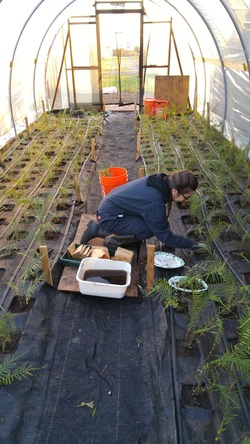 The last ferns gets planted in late afternoon light by intern Elizabeth Fernandez. The last ferns gets planted in late afternoon light by intern Elizabeth Fernandez. In a flurry of puns and pizza, we recently planted 900 Pteris vittata ferns in 36 plots at my new field site in Richmond, CA. End result: a fully fernished greenhouse (right). Broadely, the goal of the project is to see how we can increase arsenic uptake in P. vittata, a known arsenic hyperaccumulator, in order to use the fern for remediation purposes, a process known as phytoremediation. As we planted we not only experienced a connection to living things, but also implemented remediation technology. Ultimately, however, the planting was a job that would only get done with a team effort, a community spirit reminiscent of a barn-raising. I am immensely grateful for the great team work on the part of my interns and the support of fellow graduate students, culminating in an amazing effort of up to 10 people working over 5 workdays to get all the ferns in the ground. By the time I had carefully prepared my soil for planting, the ferns were long pot-bound in their 4” pots. Popping the ferns out of the pots revealed a nice pot-shaped web of roots, light green root tips emerging from the tight web of rich brown. Planted in that state, the roots would not really penetrate the soil, the ability of the plant to take up arsenic from the soil would be limited, and my arsenic phytoextraction data would be affected. I had encountered a similar problem when starting a greenhouse experiment, and in that case I had successfully washed the soil out of the roots and disturbed the bound root ball with little apparent harm to the plant. Now, I decided to build up that technique to the industrial scale, by slicing and then power washing the root mass to quickly and efficiently free up the roots. Although this treatment seemed violent, I thought the ferns would survive and even benefit, based on my experience in the greenhouse study. The fern could be in a group of plants that responds to root pruning by producing new "compensatory" root growth (Andersen 1987). Removing the potting soil would be an added benefit, increasing the contact between the roots and the arsenic-contaminated soil. To power-wash the roots, we set up 3 power washing stations with the power washers ensconced in bright green rain suits. Some people really enjoyed that job (see photo below)! However, the challenge would be preventing the ferns from wilting while the roots were disturbed. We did the root treatment immediately before planting and kept the ferns in buckets of water. The greenhouses were covered in 60% shade cloth, but some areas of the greenhouse near the front received more light, so we wanted to make sure all ferns were kept well shaded as they recovered from transplant shock. After planting, we covered the plants with floating row cover (see photo below) and misted them to keep them in a cool and humid environment for the first few days while the roots started growing. Wilting happens when there is more transpiration than water intake – likely to occur after root disturbance. Herbaceous (non-woody) plants wilt when they lose their turgor pressure, the pressure created by water in cell vacuoles and in plant xylem. The water stored in the vacuole presses out on the cell wall and creates the turgor pressure, which causes the plant to remain erect. However, when the plant is not taking in enough water through its roots, the vacuoles are not full and the plant loses its turgor pressure and wilts. Plants can recover from wilting as long as the cell walls are strong enough to retain their shape. However, new growth, like unfurling fiddleheads and young fronds on our ferns, is at risk of not being able to recover since the young cell walls are more fragile. Our goal was to prevent the young growth on our ferns from wilting, even with significant root disturbance. A few ferns receiving the most sun wilted, but immediately bounced back once covered with floating row cover and misted, which limited transpiration. Overall, we didn’t lose any new growth, let alone whole plants, a real success when planting out 900 plants. Now, several weeks later, fiddleheads are unfurling, fronds are spreading out. The ferns are acclimating to their new home, growing into their new life as research subjects! Andersen 1987. Below-Ground Herbivory in Natural Communities: A Review Emphasizing Fossorial Animals The Quarterly Review of Biology Vol. 62, No. 3 (Sep., 1987), pp. 261-286 The root zone – that interface between root and soil – shows me one of the most primary connections between molecular processes and human social purpose. As a student, gardener, educator, and community scientist, I’ve spent almost 20 years investigating sustainable agriculture, soil geochemistry, and toxicity. These areas of fascination remained separate for me until one afternoon in August 2005 on a visit to New Orleans. Hurricane Katrina struck and, in her wake, I found myself wading through toxic floodwaters unleashed by broken levees. I saw iridescent rainbows floating on top of water dark with sediment, smelled the volatile organics. I imagined the heavy metals and persistent hydrocarbons sinking into the soil as the waters receded. I realized that as a species, our relationship to the ground has never been more precarious.
Escaping Katrina, I evacuated back to my sustainable agriculture apprenticeship in Tennessee. Compared to many people who experienced the hurricane, I was privileged – instead of losing my home, I had a cozy room on a community farm where I could welcome the people I evacuated with. As the shock wore off, I thought about the flood's apparent toxicity, trying to connect those polluted waters with long-term contaminant levels in the city. I found that the poison was nothing new; New Orleans' historically high lead concentrations have been studied extensively. For the next two years I traveled between New Orleans, my home in Tennessee, and post-industrial Milwaukee, conducting site visits with urban gardeners who worked in contaminated soil like that of New Orleans. I wanted to understand grassroots approaches to soil remediation, their relationship to the underlying soil chemistry. Some of what I found shocked me. One gardener picked up a sunflower, explained to me that it had “cleaned up” the lead, and casually tossed it into the compost pile! Any lead in that sunflower would now be re-entering the soil cycle – but the plant may well have contained minimal lead. Lead is a tenacious element that bonds strongly to soil particles, with only limited bioavailability. I reviewed the literature and found that lead phytoremediation is controversial, possibly ineffective (Chaney et al., 2007). Why was that gardener so excited about removing lead with sunflowers, and why didn’t that person know that it wouldn’t work? Plant-based soil clean-up methods are compelling to urban gardeners, community activists, and researchers alike. Known broadly as phytoremediation, these techniques have the appeal of being almost undeniably green, and seemly affordable to anyone with a green thumb. Harnessing the unique capabilities of hyperaccumulators – relatively rare plants that can sequester high concentrations of toxic elements in their aboveground tissue (leaves, fronds, etc) – is particularly attractive. But the ability of a plant to remove metals from soil is governed as much by the behavior of the metal in the soil, as it is by the plant. For example, I study a hyperaccumulator of arsenic, the brake fern, Pteris vittata L. This fern is able to tolerate extremely high concentrations (several thousand parts per million) of arsenic in its fronds, but soil remediation with P. vittata is still relatively slow. This opens the door to my research, looking at arsenic and nutrient biogeochemical cycling in the root zone, to understand how we can speed up arsenic uptake in the fern. Let’s go back to the sunflower in the compost pile. I know the person who tossed it there had the best intentions, but was simply uninformed. This knowledge gap is what motivates me to pursue a PhD in plant-based soil remediation methods: so I can help translate and spread this knowledge to interested people. I’m inspired by the training-the-trainer model practiced in agroecology, with hopes of using horizontal knowledge transfer to facilitate a growing team of urban agriculturalists well educated about their soil and the plants that thrive in it. Sources: Chaney, R.L., Angle, J.S., Broadhurst, C.L., Peters, C.A., Tappero, R. V, and Sparks, D.L. (2007). Improved understanding of hyperaccumulation yields commercial phytoextraction and phytomining technologies. J. Environ. Qual. 36, 1429–1443. |
AuthorSarick Matzen completed his PhD in Environmental Science, Policy, and Management department at University of California, Berkeley in 2020. He is now a postdoc in the Soil, Water, and Climate Department at the University of Minnesota working on iron cycling in marine systems. Archives
July 2019
Categories |
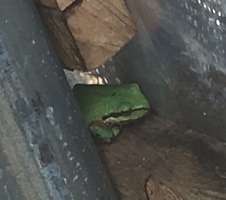
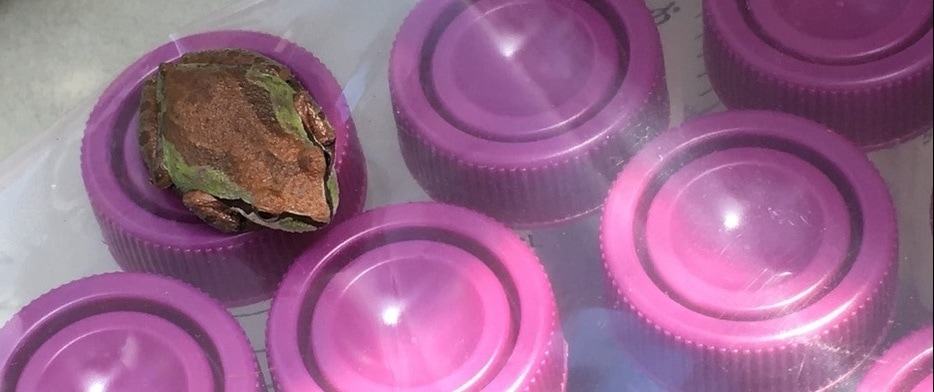
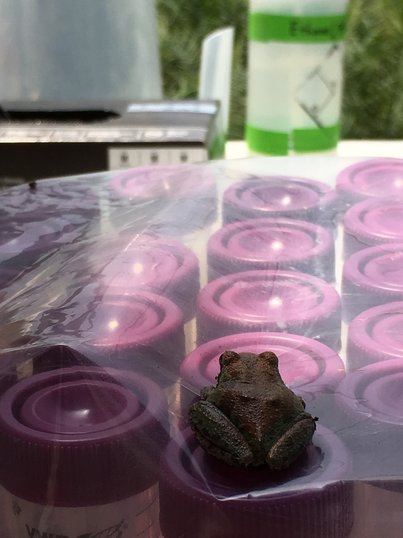
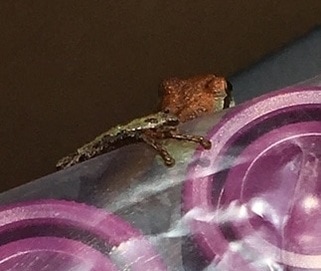
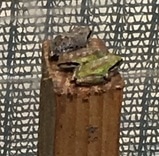
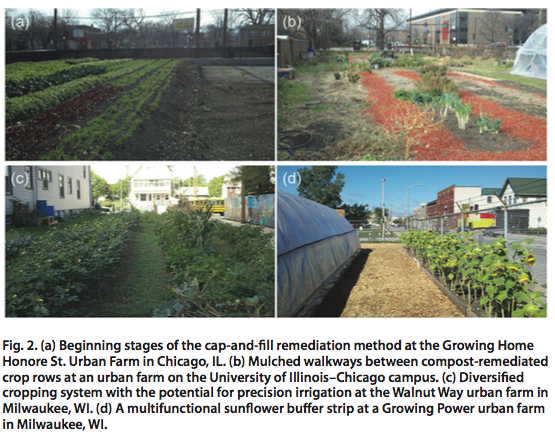
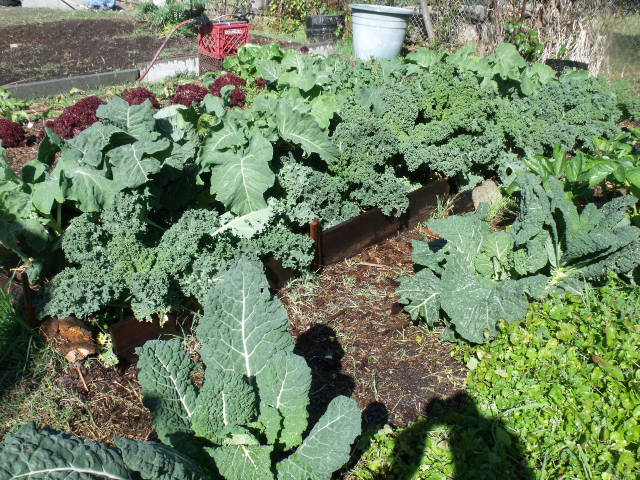
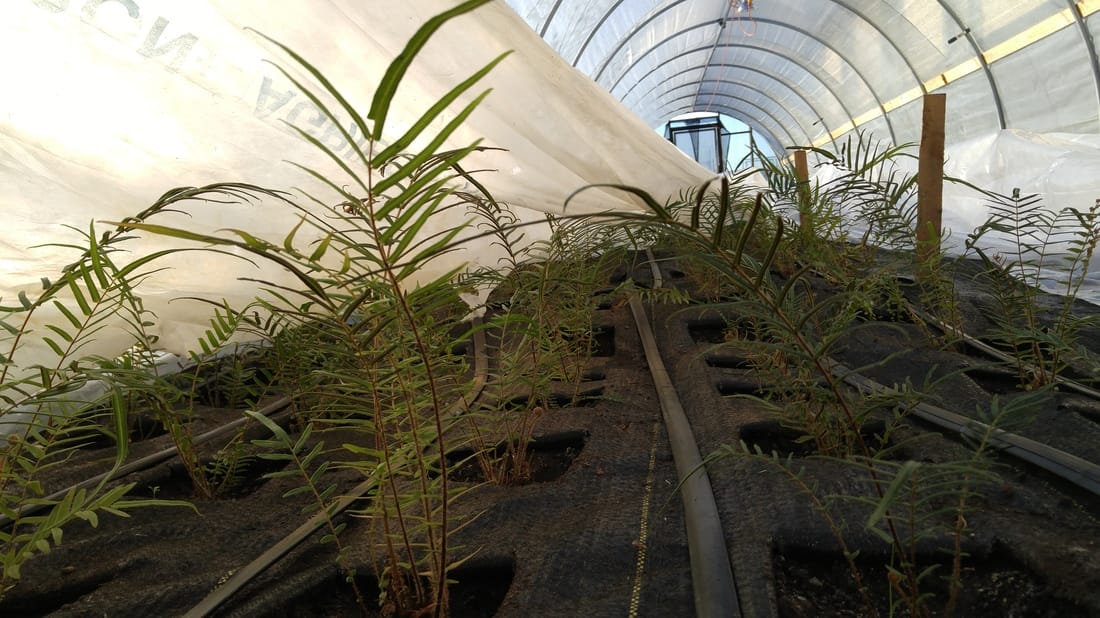
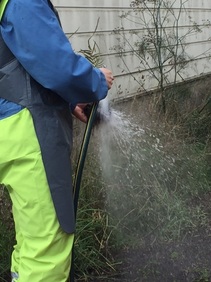
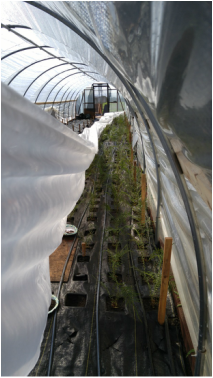
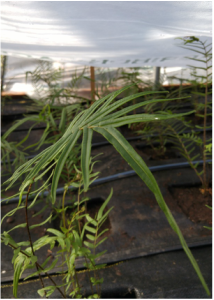
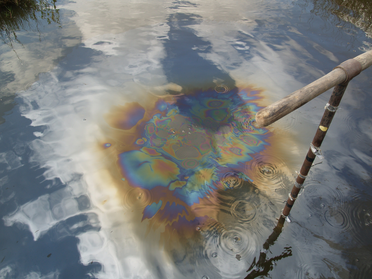
 RSS Feed
RSS Feed
